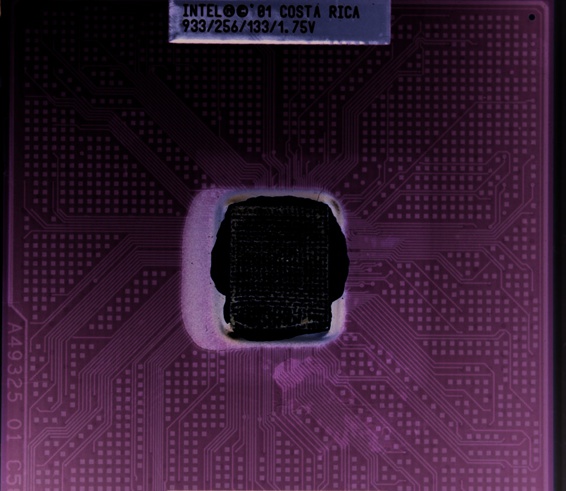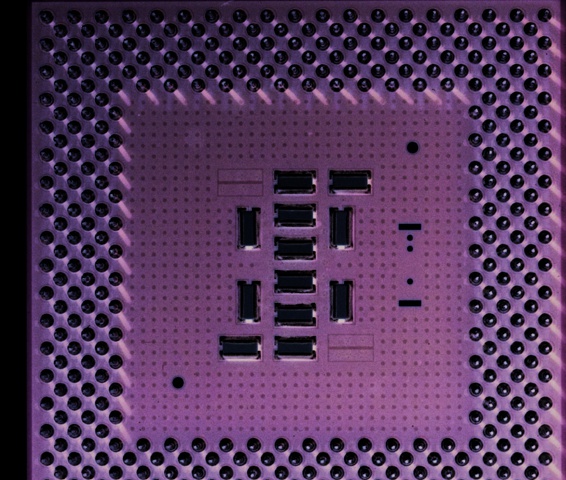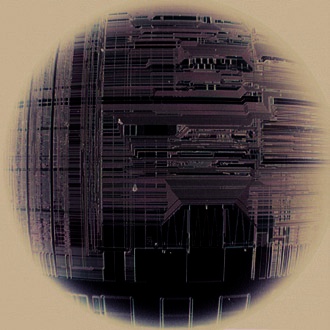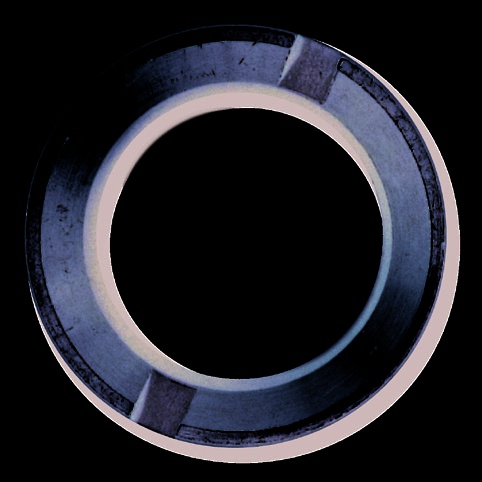Inside the Machine: An Illustrated Introduction to Microprocessors and Computer Architecture (104 page)
Authors: jon stokes
Tags: #Computers, #Systems Architecture, #General, #Microprocessors

The paper is Weyerhaeuser 60# Husky Offset, which is an acid-free paper.
U P D A T E S
Visit
www.nostarch.com/insidemachine.htm
for updates, errata, and other
information.





A
In
A Look Inside the Silicon Heart of Modern Computing
I
nllu
Computers perform countless tasks ranging
st
sr
from the business critical to the recreational,
at i
e
but regardless of how differently they may look
d
d I
and behave, they’re all amazingly similar in
nt e
basic function. Once you understand how the
ro
microprocessor—or central processing unit (CPU)—
Includes discussion of:
d
ut
works, you’ll have a firm grasp of the fundamental
cti h
concepts at the heart of all modern computing.
• Parts of the computer and microprocessor
on
• Programming fundamentals (arithmetic
t
eo
Inside the Machine
, from the co-founder of the highly
instructions, memory accesses, control
M
icM
respected Ars Technica website, explains how
flow instructions, and data types)
r
microprocessors operate—what they do and how
• Intermediate and advanced microprocessor
op
they do it. The book uses analogies, full-color
concepts (branch prediction and speculative
ro
ac
diagrams, and clear language to convey the ideas
execution)
es c
that form the basis of modern computing. After
• Intermediate and advanced computing
so
discussing computers in the abstract, the book
concepts (instruction set architectures,
r
hs a
examines specific microprocessors from Intel,
RISC and CISC, the memory hierarchy, and
nd i
IBM, and Motorola, from the original models up
encoding and decoding machine language
C
n
through today’s leading processors. It contains the
instructions)
om
most comprehensive and up-to-date information
• 64-bit computing vs. 32-bit computing
p
eu
available (online or in print) on Intel’s latest
• Caching and performance
te
processors: the Pentium M, Core, and Core 2 Duo.
r A
Inside the Machine
also explains technology terms
Inside the Machine
is perfect for students of
rc
and concepts that readers often hear but may not
science and engineering, IT and business
hi
fully understand, such as “pipelining,” “L1 cache,”
professionals, and the growing community
tec
“main memory,” “superscalar processing,” and
of hardware tinkerers who like to dig into the
tu
“out-of-order execution.”
guts of their machines.
re
Jon “Hannibal” Stokes is co-founder and Senior CPU Editor of Ars Technica. He has written for a variety of publications on microprocessor architecture and the technical aspects of personal computing. Stokes holds a degree in computer engineering from Louisiana State University and two advanced degrees in the humanities from Harvard University. He is currently pursuing a Ph.D. at the University of Chicago.
“This is, by far, the most well written text that I have seen on the subject
S
of computer architecture.”
to
An Illustrated Introduction to
—John Stroman, Technical Account Manager, Intel
kes
Microprocessors and Computer Architecture
TH E FI N EST I N G E E K E NTE RTAI N M E NT™
www.nostarch.com
$49.95
($61.95 cdn)
shelve in:
Computer Hardware
Jon Stokes
ISBN: 978-1-59327-104-6
5 4 9 9 5
9 7 8 1 5 9 3 2 7 1 0 4 6
6 8 9 1 4 5 7 1 0 4 2 7
- Preface
- Acknowledgments
- Introduction
- Basic Computing Concepts
- The Mechanics of Program Execution
- Pipelined Execution
- The Lifecycle of an Instruction
- Basic Instruction Flow
- Pipelining Explained
- Applying the Analogy
- The Lifecycle of an Instruction
- Superscalar Execution
- The Intel Pentium and Pentium Pro
- The Original Pentium
- The Intel P6 Microarchitecture: The Pentium Pro
- Conclusion
- The Original Pentium
- PowerPC Processors: 600 Series, 700 Series, and 7400
- Intel’s Pentium 4 vs. Motorola’s G4e: Approaches and Design Philosophies
- The Pentium 4’s Speed Addiction
- The General Approaches and Design Philosophies of the Pentium 4 and G4e
- An Overview of the G4e’s Architecture and Pipeline
- Branch Prediction on the G4e and Pentium 4
- An Overview of the Pentium 4’s Architecture
- An Overview of the Pentium 4’s Pipeline
- Stages 1 and 2: Trace Cache Next Instruction Pointer
- Stages 3 and 4: Trace Cache Fetch
- Stage 5: Drive
- Stages 6 Through 8: Allocate and Rename (ROB)
- Stage 9: Queue
- Stages 10 Through 12: Schedule
- Stages 13 and 14: Issue
- Stages 15 and 16: Register Files
- Stage 17: Execute
- Stage 18: Flags
- Stage 19: Branch Check
- Stage 20: Drive
- Stages 21 and Onward: Complete and Commit
- Stages 1 and 2: Trace Cache Next Instruction Pointer
- The Pentium 4’s Instruction Window
- The Pentium 4’s Speed Addiction
- Intel’s Pentium 4 vs. Motorola’s G4e: The Back End
- Some Remarks About Operand Formats
- The Integer Execution Units
- The Floating-Point Units (FPUs)
- The Vector Execution Units
- Conclusions
- Some Remarks About Operand Formats
- 64-Bit Computing and x86-64
- The G5: IBM’s PowerPC 970
- Overview: Design Philosophy
- Caches and Front End
- Branch Prediction
- The Trade-Off: Decode, Cracking, and Group Formation
- The PowerPC 970’s Back End
- Load-Store Units
- Front-Side Bus
- The Floating-Point Units
- Vector Computing on the PowerPC 970
- Floating-Point Issue Queues
- The Performance Implications of the 970’s Group Dispatch Scheme
- Conclusions
- Overview: Design Philosophy
- Understanding Caching and Performance
- Intel’s Pentium M, Core Duo, and Core 2 Duo
- Code Names and Brand Names
- The Rise of Power-Efficient Computing
- Power Density
- The Pentium M
- Core Duo/Solo
- Core 2 Duo
- Core’s Back End
- Code Names and Brand Names